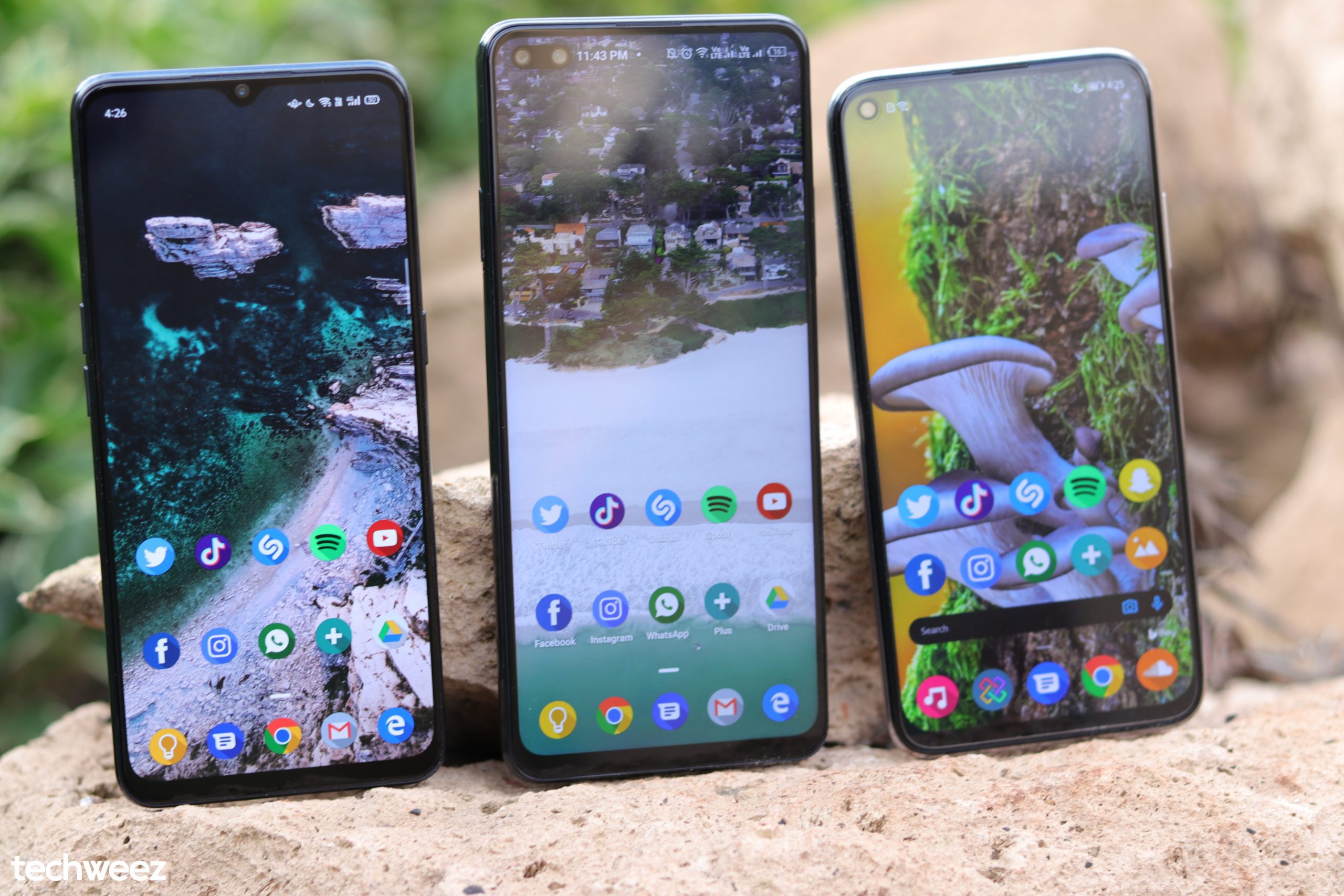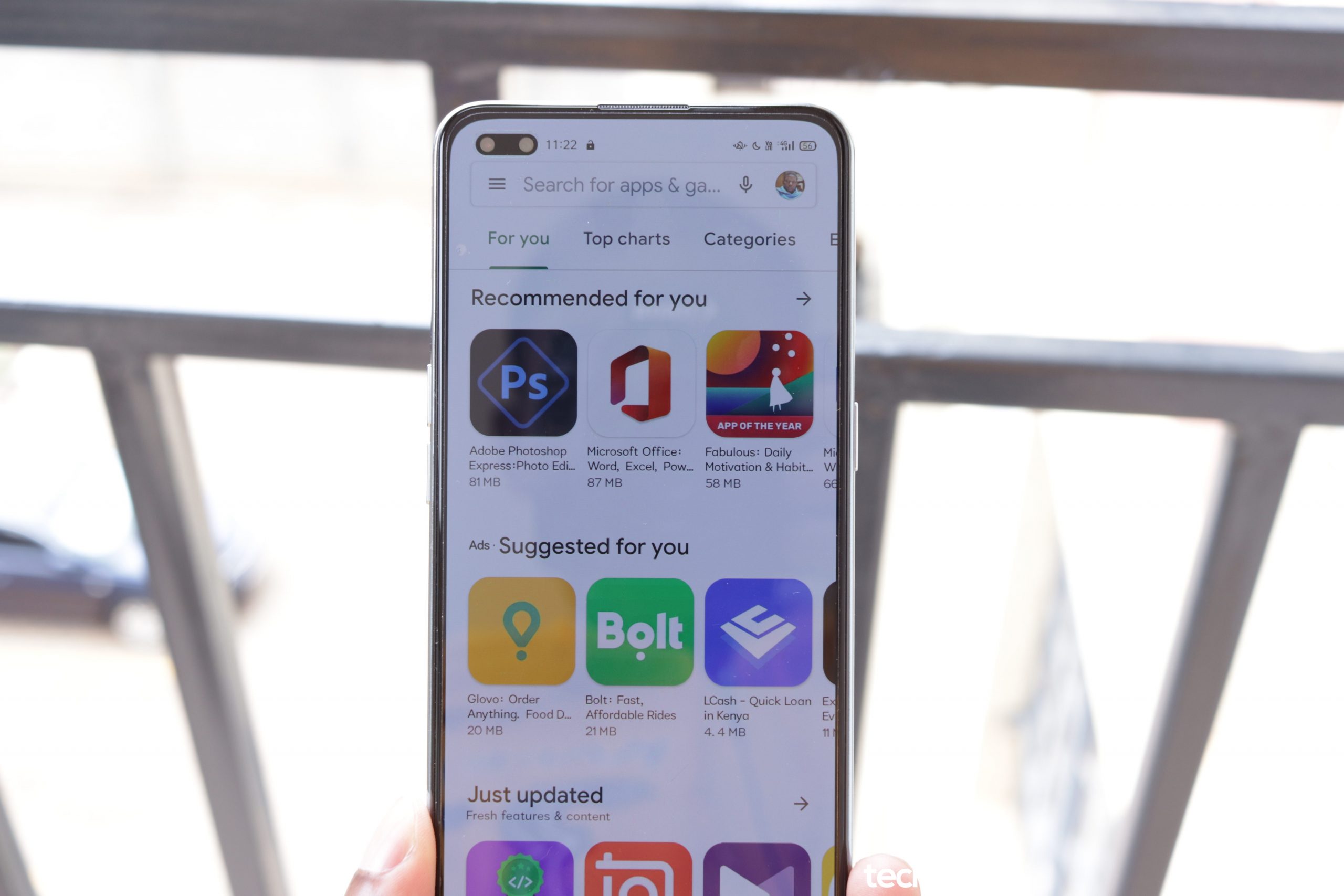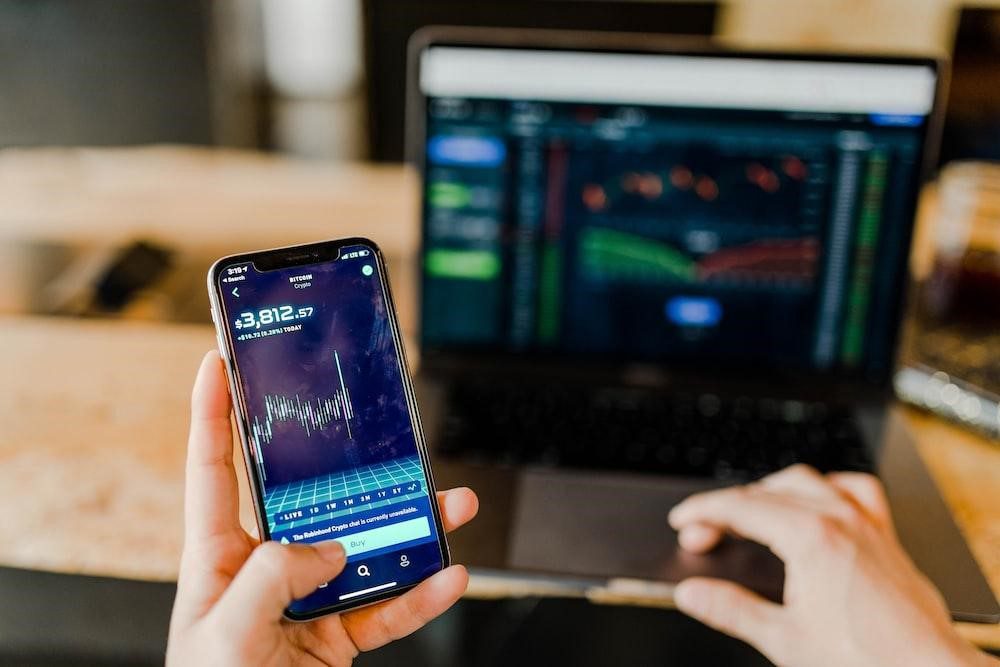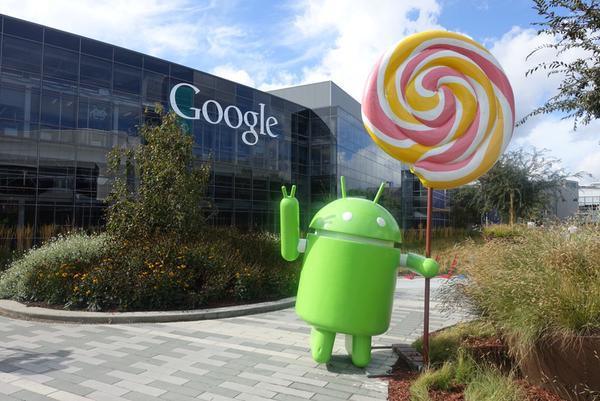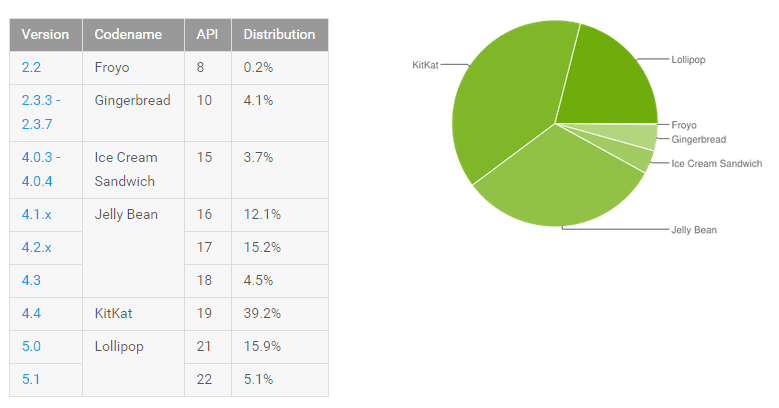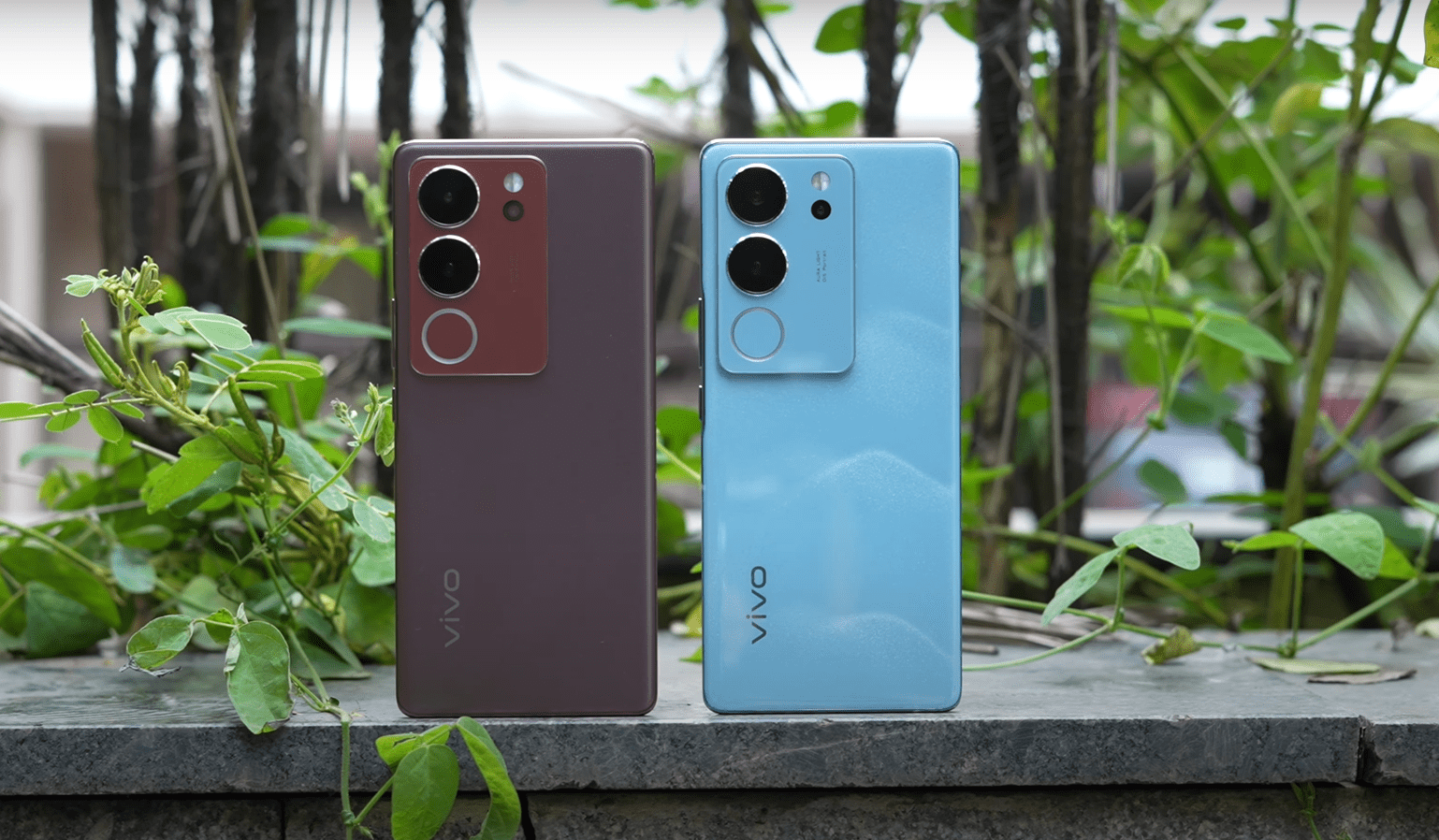In about two months, Android 5, codenamed Lollipop, will mark one year since it first became available officially on devices, the Nexus 6 smartphone and the Nexus 9 tablet. It is expected to be succeeded by Android 6, codenamed Marshmallow, by that time and likely to be available at first on another set of two Nexus devices, smartphones made by LG and Huawei. If that expected transition happened at the end of September as has been suggested in some quarters, what legacy will Lollipop leave behind? According to the latest Android platform distribution figures from Google, just 21% of all Android devices accessing the Play Store in the last few days actually run the latest flavour of Android.
Android KitKat which will be celebrating two years since it made its first appearance on the LG-made Google Nexus 5, is still the king of Android as far as market share goes. KitKat is installed on 39.2% of all Android devices. Yesteryear darling JellyBean comes second at 31.8%. The bane of Android fragmentation continues to be visible thanks to the presence of Android 2.2 Froyo and Android 2.3 Gingerbread on the chart. The former is almost on its way out since its share has fallen way below 1% but the latter is still running on a respectable 4% of Android devices.
Android 6.0 Marshmallow is expected to introduce a wide range of sweeping changes to Android as it builds on the new Material Design interface introduced in Lollipop last year. Testers of the Android M preview have recently been shocked to find out that Google is silently restricting application access to certain features. Applications that rely on the system for their “floating” capabilities like lyrics app MusiXmatch and alternate browsing app Link Bubble will now require users to go directly to the Settings page in order to grant them permission to “float”. This is just but one of the many changes coming in Android 6 and beyond. Native support for fingerprint scanners, advanced app permissions management and Doze mode – apps going into deep sleep when not in use so as to minimize power consumption and resource utilization and in turn prolong battery life – are among the others.


